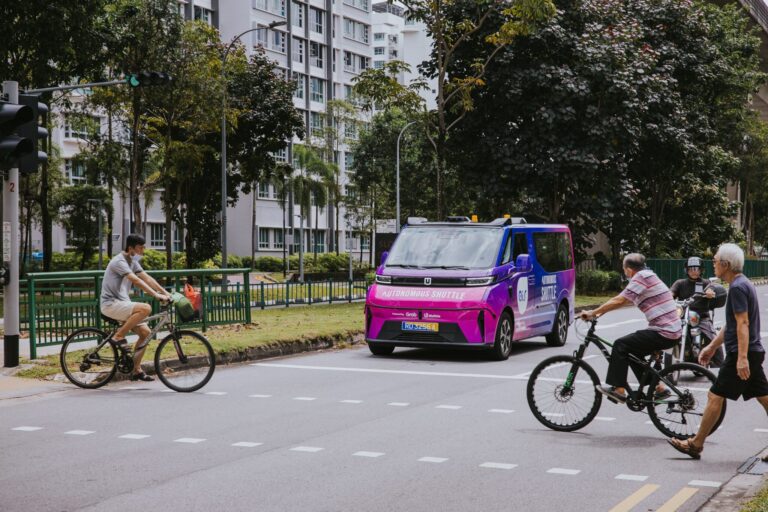WeRide and Grab have announced that Singapore’s Land Transport Authority (LTA) has granted them approval to conduct autonomous vehicle (AV) testing with the entire Ai.R (autonomously intelligent ride) fleet within the Punggol district.
The partners began Punggol’s first autonomous vehicle (AV) tests in mid-October 2025. With the latest approval, WeRide and Grab will expand their AV testing program and aim to increase the number of shuttle test runs in Punggol by up to fourfold by the end of the year. Throughout the AV testing and initial phase of public rides, safety operators will be on board the AVs at all times, providing real-time supervision.
Ai.R, which is operated by Grab in partnership with WeRide, is a public autonomous ride service. The Ai.R fleet comprises 11 AVs – 10 GXRs (five passenger seats) and one Robobus (eight passenger seats). The AV test runs are critical to preparations for the launch of Ai.R, which will serve two dedicated shuttle service routes in Punggol, establishing the district as Singapore’s first residential neighborhood with an autonomous shuttle service. Ai.R is expected to take its first batch of public passengers by early 2026 and will connect residents to key amenities like Punggol Coast MRT station, Punggol Coast Mall bus interchange, malls and clinics.
Real-world testing to ensure reliability
During the AV test runs, the AVs gather and analyze real-world data to localize their AI driving models. This includes details on road infrastructure, traffic flows and the nuanced behaviors of local road users and pedestrians. The AVs are also trained to handle a variety of weather conditions – such as sudden rain and intense sun glare – to ensure reliable operations.
The AVs continually calibrate their driving performance by rehearsing operating routes to refine precision maneuvers, such as accurate turn timing, smooth acceleration and braking, and maintaining safe distances from obstacles. They also train to handle complex urban scenarios like tight turns on narrow residential roads and parking lots, while preserving appropriate safety clearance from walls, pedestrians and other vehicles. Adjustments are further made to execute seamless pickups and drop-offs, ensuring gradual slowdowns and precise stops at designated points for effortless boarding and alighting.
Equipped with a sensor suite consisting of lidars and cameras, the GXRs and Robobus have 360° vision, can see up to 200m in every direction and detect objects in the rain.
To support the rollout of the Ai.R service, GrabAcademy (Grab’s in-house training institution) and WeRide are training an initial cohort of more than 10 experienced Grab driver-partners for safety operator roles. Following theory lessons and closed-circuit practical training, the first Ai.R safety operator trainees have progressed to on-the-road training.
Azman Bin Rahmad, an Ai.R Safety Operator trainee, said, “I’m excited to be among the first to train as an AV safety operator. I’ve seen firsthand how these vehicles operate and how our feedback directly enhances their performance. I look forward to learning more about this advanced technology, and working with it to support Singapore’s transport needs.”
In related news, Ansible Motion and IAAPS partner on complete vehicle-in-the-loop test environment


